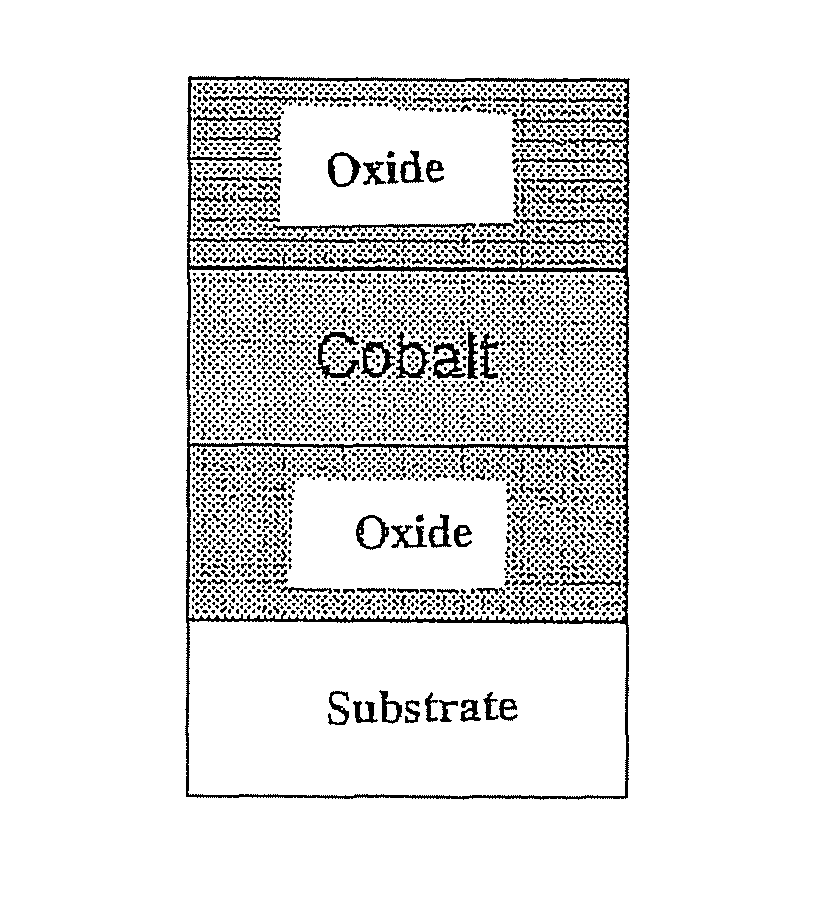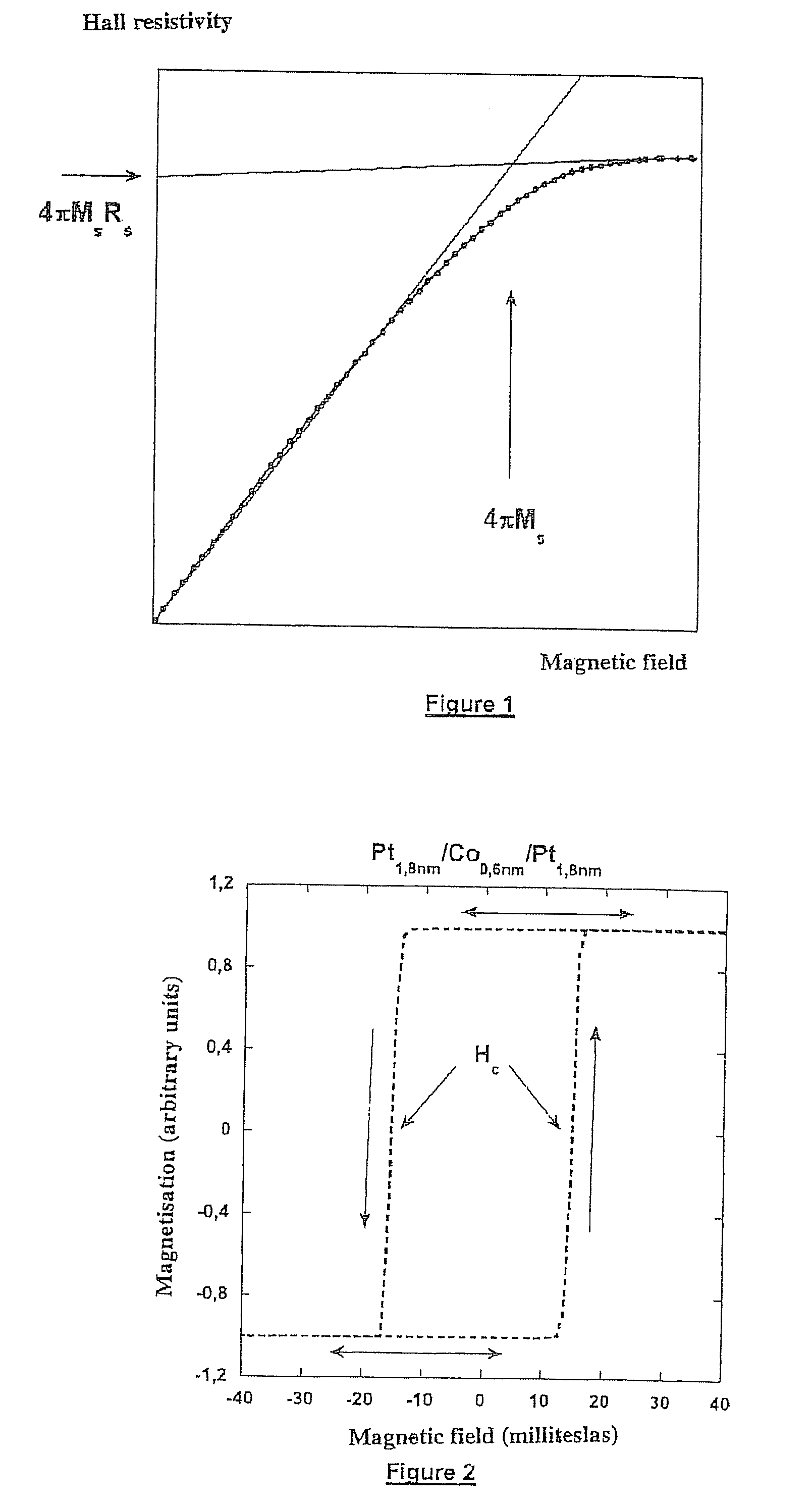Three-layer magnetic element, magnetic field sensor, magnetic memory and magnetic logic gate using such an element
a three-layer magnetic element and logic gate technology, applied in the field of magnetic materials, can solve the problems of low longitudinal resistivity of materials, inability to use them in the area of magnetic field sensors or magnetic memories or logic components, and difficulty in deliberately changing the magnetisation direction by applying a perpendicular magnetic field
- Summary
- Abstract
- Description
- Claims
- Application Information
AI Technical Summary
Benefits of technology
Problems solved by technology
Method used
Image
Examples
first embodiment
[0107]FIG. 3 is a schematic view of the invention. A magnetic layer M consisting, here, of cobalt and having a generally small thickness is deposited on a substrate which has the required characteristics to replace layer O and is covered, for example, in oxidised or nitrided silicon or composed, for example, of glass or magnesium oxide. If this thickness exceeds a specific value which depends on the material used for layer M and the intensity of the interfacial interactions with the materials that are in contact with this magnetic layer M, magnetisation is no longer, as is known, perpendicular to the layer plane due to the volume shape anisotropy of layer M which tends to keep magnetisation of the layer in-plane.
[0108]For this layer M, its thickness is selected and, above all, determined by the ability to obtain a continuous metal layer. In fact, as discussed earlier, some magnetic metals do not wet satisfactorily on oxides such as silicon dioxide or alumina. In some cases, the magn...
second embodiment
[0118]FIG. 6 is a schematic view of the invention.
[0119]One deposits layer O, preferably made of aluminium oxide, on the above-mentioned substrate, the thickness of the layer is 0.3 to 5 nm but the latter figure is not very critical. This layer generally consists of deposited metal such as aluminium that has been oxidized for instance. However, aluminium can be replaced by any other element capable of combining with oxygen to form high-quality oxides in thin layers, namely and for example, magnesium, ruthenium, silicon, tantalum, chrome, zirconium, titanium, hafnium, vanadium, cobalt, nickel, iron, copper, tungsten and, more generally, any material or alloy capable of forming stable oxides. One can also use an alloy or a multilayer of these materials as an elementary oxide layer for certain particular embodiments.
[0120]Instead of using a plasma oxidation technique, it is also possible to produce the oxide by using a known technique of reactive sputtering of the element in question i...
fifth embodiment
[0128]In a fifth embodiment shown schematically in FIG. 10, it is possible to bring layer M in question, here a layer made of cobalt, into contact with a layer of antiferromagnetic material M′ such as IrMn, PtMn, FeMn or NiMn alloys which are known to induce exchange anisotropy coupling with said layer M.
PUM
 Login to View More
Login to View More Abstract
Description
Claims
Application Information
 Login to View More
Login to View More - R&D
- Intellectual Property
- Life Sciences
- Materials
- Tech Scout
- Unparalleled Data Quality
- Higher Quality Content
- 60% Fewer Hallucinations
Browse by: Latest US Patents, China's latest patents, Technical Efficacy Thesaurus, Application Domain, Technology Topic, Popular Technical Reports.
© 2025 PatSnap. All rights reserved.Legal|Privacy policy|Modern Slavery Act Transparency Statement|Sitemap|About US| Contact US: help@patsnap.com



